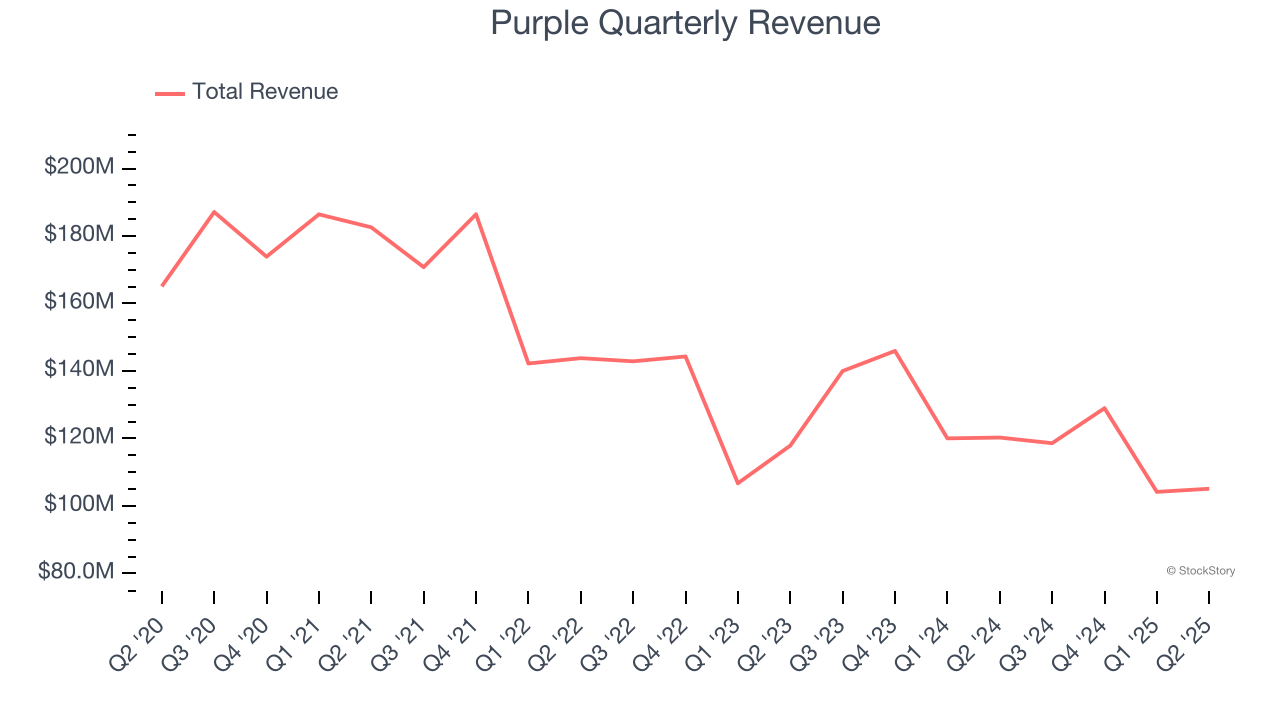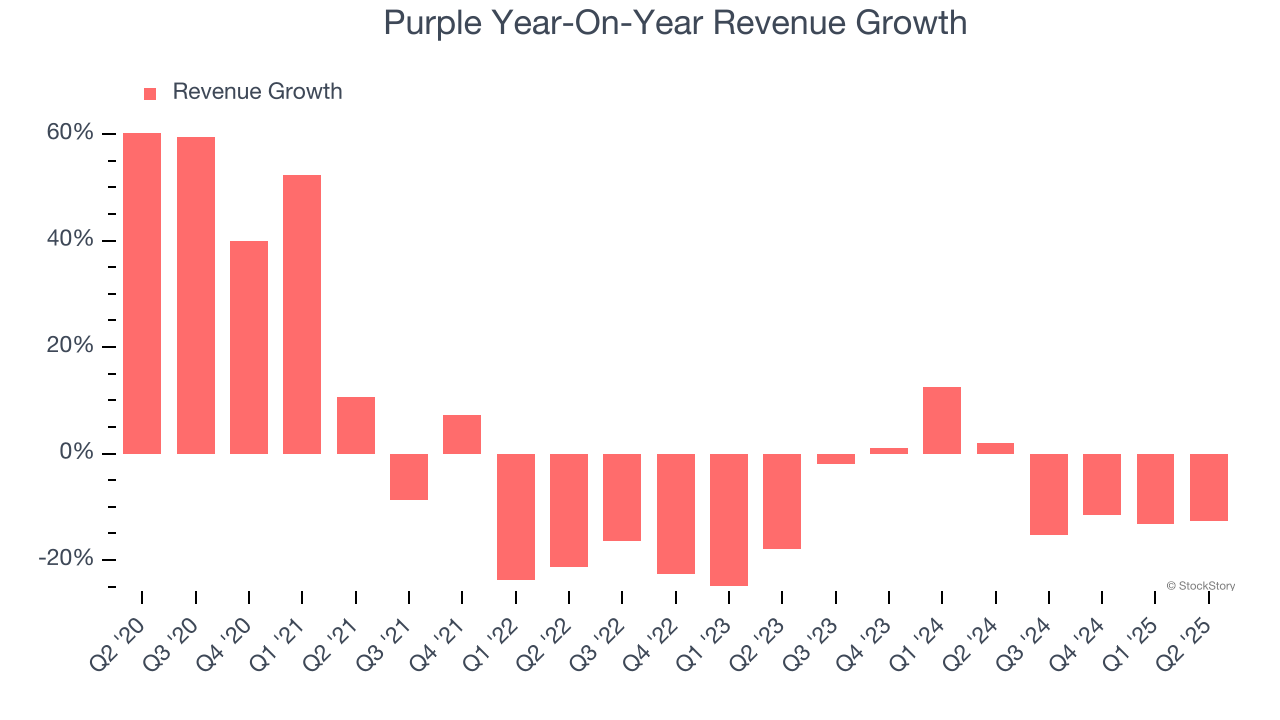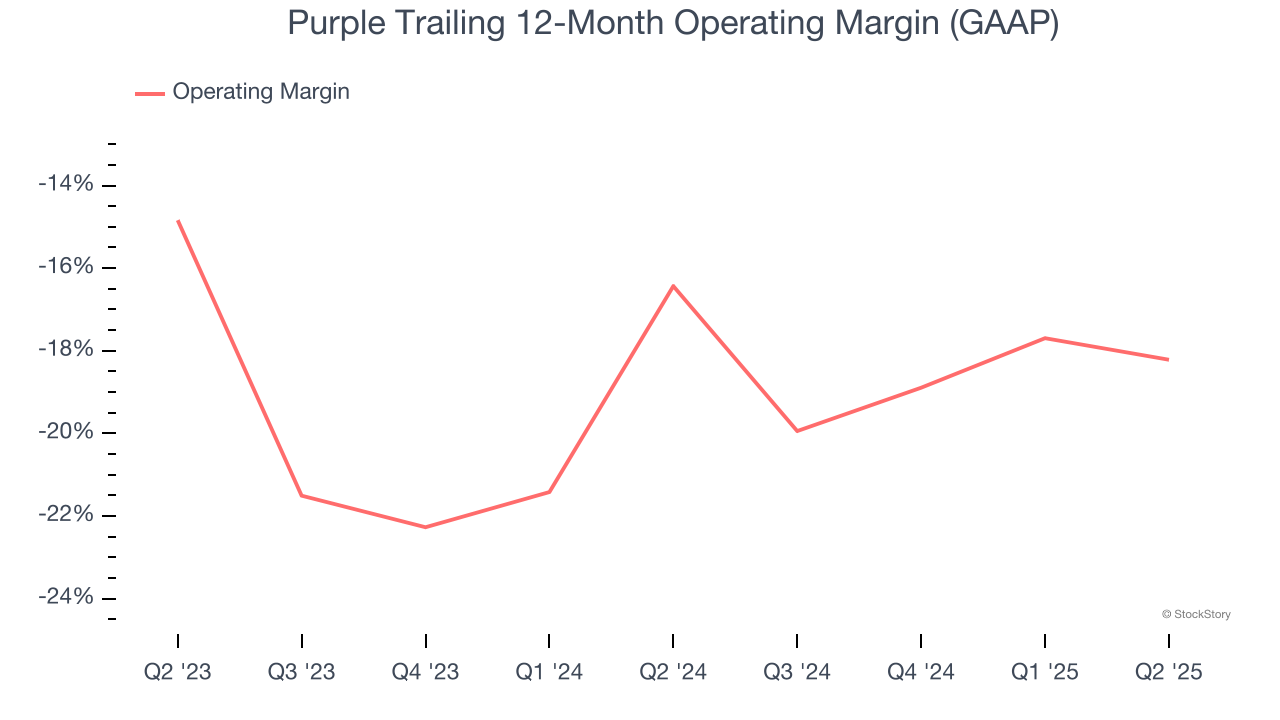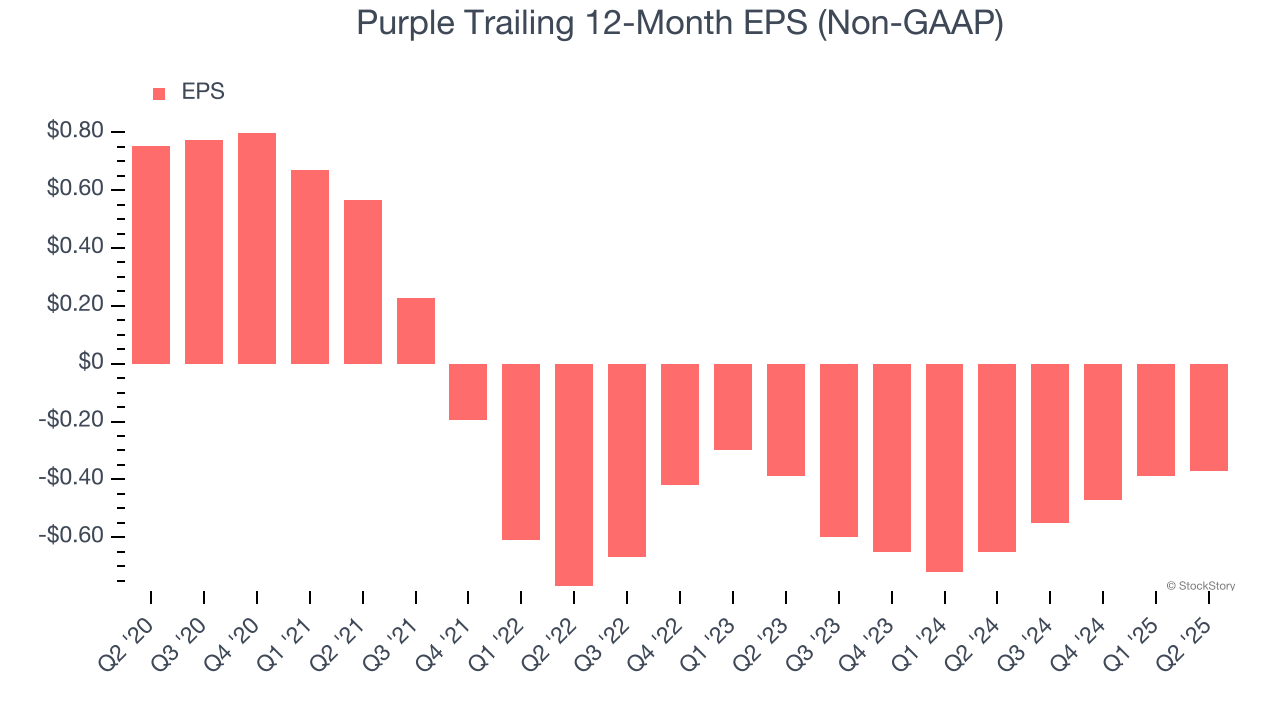
Bedding and comfort retailer Purple (NASDAQ: PRPL) met Wall Street’s revenue expectations in Q2 CY2025, but sales fell by 12.6% year on year to $105.1 million. The company’s full-year revenue guidance of $475 million at the midpoint came in 1.7% above analysts’ estimates. Its non-GAAP loss of $0.11 per share was in line with analysts’ consensus estimates.
Is now the time to buy Purple? Find out by accessing our full research report, it’s free.
Purple (PRPL) Q2 CY2025 Highlights:
- Revenue: $105.1 million vs analyst estimates of $105.3 million (12.6% year-on-year decline, in line)
- Adjusted EPS: -$0.11 vs analyst estimates of -$0.12 (in line)
- Adjusted EBITDA: -$2.36 million vs analyst estimates of -$2.92 million (-2.2% margin, relatively in line)
- The company reconfirmed its revenue guidance for the full year of $475 million at the midpoint
- EBITDA guidance for the full year is $5 million at the midpoint, above analyst estimates of $1.83 million
- Operating Margin: -13.5%, down from -12.1% in the same quarter last year
- Free Cash Flow was -$6.97 million compared to -$11.02 million in the same quarter last year
- Market Capitalization: $108.2 million
"We are pleased with our second quarter performance, which reflects our disciplined execution and continued progress as we build a premium, sustainable, and profitable brand," said Rob DeMartini, CEO of Purple Innovation.
Company Overview
Founded by two brothers, Purple (NASDAQ: PRPL) creates sleep and home comfort products such as mattresses, pillows, and bedding accessories.
Revenue Growth
A company’s long-term sales performance is one signal of its overall quality. Any business can put up a good quarter or two, but the best consistently grow over the long haul. Over the last five years, Purple’s demand was weak and its revenue declined by 2.9% per year. This was below our standards and suggests it’s a low quality business.

Long-term growth is the most important, but within consumer discretionary, product cycles are short and revenue can be hit-driven due to rapidly changing trends and consumer preferences. Purple’s recent performance shows its demand remained suppressed as its revenue has declined by 5.5% annually over the last two years. 
This quarter, Purple reported a rather uninspiring 12.6% year-on-year revenue decline to $105.1 million of revenue, in line with Wall Street’s estimates.
Looking ahead, sell-side analysts expect revenue to grow 8.6% over the next 12 months. While this projection indicates its newer products and services will fuel better top-line performance, it is still below average for the sector.
Unless you’ve been living under a rock, it should be obvious by now that generative AI is going to have a huge impact on how large corporations do business. While Nvidia and AMD are trading close to all-time highs, we prefer a lesser-known (but still profitable) stock benefiting from the rise of AI. Click here to access our free report one of our favorites growth stories.
Operating Margin
Operating margin is a key measure of profitability. Think of it as net income - the bottom line - excluding the impact of taxes and interest on debt, which are less connected to business fundamentals.
Purple’s operating margin has shrunk over the last 12 months and averaged negative 17.3% over the last two years. Unprofitable consumer discretionary companies with falling margins deserve extra scrutiny because they’re spending loads of money to stay relevant, an unsustainable practice.

Purple’s operating margin was negative 13.5% this quarter. The company's consistent lack of profits raise a flag.
Earnings Per Share
Revenue trends explain a company’s historical growth, but the long-term change in earnings per share (EPS) points to the profitability of that growth – for example, a company could inflate its sales through excessive spending on advertising and promotions.
Sadly for Purple, its EPS declined by 20% annually over the last five years, more than its revenue. This tells us the company struggled because its fixed cost base made it difficult to adjust to shrinking demand.

In Q2, Purple reported EPS at negative $0.11, up from negative $0.13 in the same quarter last year. This print beat analysts’ estimates by 8.3%. Over the next 12 months, Wall Street is optimistic. Analysts forecast Purple’s full-year EPS of negative $0.37 will reach break even.
Key Takeaways from Purple’s Q2 Results
We were impressed by Purple’s optimistic full-year EBITDA guidance, which blew past analysts’ expectations. We were also glad its EBITDA outperformed Wall Street’s estimates. Zooming out, we think this quarter featured some important positives. The stock traded up 9.2% to $0.93 immediately after reporting.
Sure, Purple had a solid quarter, but if we look at the bigger picture, is this stock a buy? What happened in the latest quarter matters, but not as much as longer-term business quality and valuation, when deciding whether to invest in this stock. We cover that in our actionable full research report which you can read here, it’s free.





